It’s a model that wasn’t necessarily destined for significant commercial success. With its atypical design, the Toyota C-HR surprised journalists and the public during its presentation at the Geneva Motor Show in early 2016. But eight years later, this original format of a small hybrid crossover has found its audience, with almost 900,000 spectators. sales in Europe, of which 110,000 in France alone.
Therefore, this second generation launched at the beginning of 2024 was especially expected. In addition to two non-plug-in hybrid versions (140 horses in front-wheel drive and 200 horses in all-wheel drive), there is now a new plug-in hybrid version in the range, which we chose to test.
A design change in continuity
First, a quick look at the design. We clearly recognize the first C-HR by its general shape, although it retains its rather compact dimensions of 4.36 meters and, unfortunately (for the rear passengers), these “deadly” windows with very limited visibility.
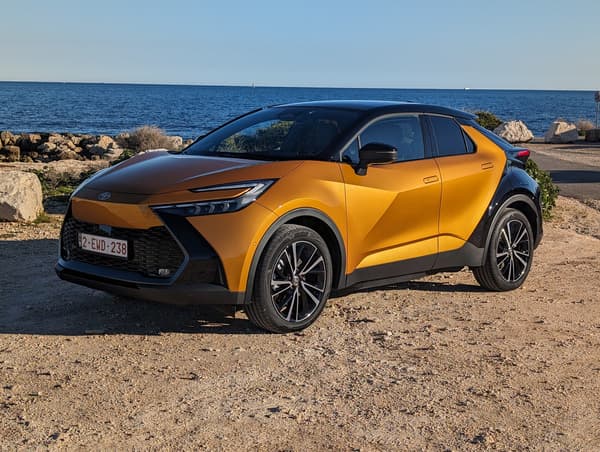
The small crossover, however, clearly evolves with a new front in which the full LED headlights stand out. On the sides we can already clearly see the body lines that give it character. We now also have handles flush with the body, a first for Toyota. This gain in modernity still makes opening more complex and also adds a noise that you will have to get used to when starting with the four handles that retract with the automatic locking.
Finally, at the rear, the model branding is now integrated into the light strip and can illuminate when opened.
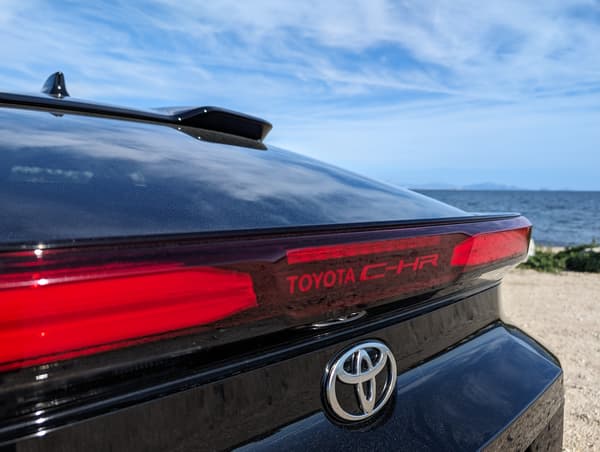
We’ll also highlight the new two-tone paint, standard on top trims, like our Premiere Collection launch series tester. In our case, the association between a very sunny golden yellow and black on the roof and rear of the vehicle stands out. Located just behind, it is difficult to guess this original color choice.
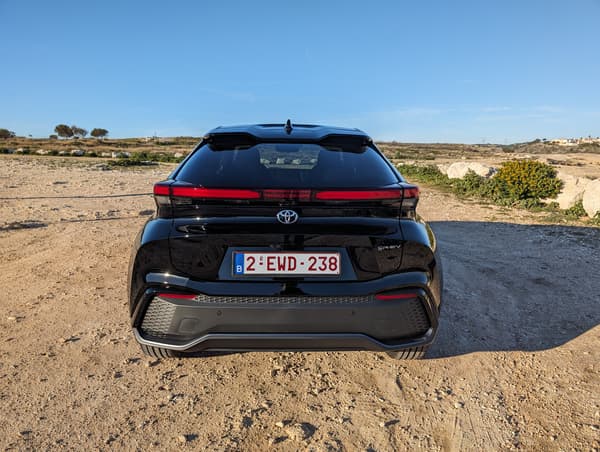
An interior in progress
Inside, there is also clear progress in terms of perceived quality. A cabin that uses the classic formula of the moment with an instrument screen and a touch screen for infotainment, each 12.3 inches diagonal.
The latter offers a good definition/responsiveness ratio and compatibility with Android Auto and Carplay.
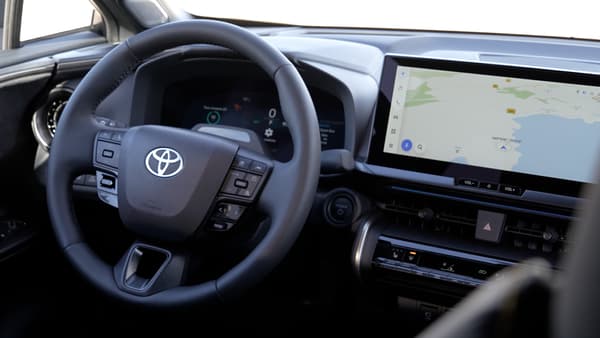
A head-up display completes the counter information, with the practical aspect of having the main information (real-time speed, cruise control speed, limitation, GPS instructions, etc.) projected directly on the windshield.
We also found the main driving aids, with the adaptive regulator and road monitoring duo, which we thought worked well. The only reservation: a regulator that brakes too sharply in a traffic jam or in a heavy traffic situation. Too bad for a use case where this type of assistant is very valuable.
In short, an interior that gains in modernity, but still retains too many buttons or menus that are sometimes complex to understand. A “great techno essay” that you will find in long video format in our program On the road to tomorrow Issued this Saturday, March 30.
An electric one for day to day, a thermal one for long trips, the promise of the PHEV
From the outside, there are few visual differences with a classic C-HR hybrid: a simple PHEV badge at the rear and, even more discreet, a slight protrusion on the underside of the vehicle.
In total, the mass is 1,650 tons, that is, an excess weight of 180 kg compared to the C-HR HEV. We must also allow a drop in trunk volume to 310 liters, that is, 54 less.
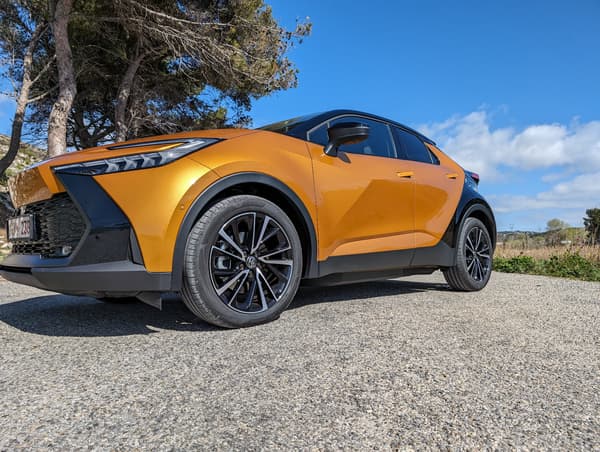
In fact, we find a 13.6 kWh battery, which promises 66 kilometers of WLTP autonomy, rather in the high range of the category. An important difference with the hybrid version that only has a 4 kWh battery, not allowing you to truly drive 100% electric for a long period.
In our PHEV version, the electric motor offers a power of 163 horsepower. For the thermal part, a 2-liter gasoline engine with 152 horsepower. The two can work together, offering a combined 223 horsepower, or independently.
In the first part of our test, we let the vehicle decide for itself between the two power sources, the preferred mode to smooth fuel consumption. The vehicle then prefers electricity, but can also try to conserve battery power if the route entered into the GPS passes through, for example, an EPZ.
On a mixed route of about 100 kilometers, the vehicle runs 88% on electric power, with a consumption of 13.7 kWh per 100 kilometers and 1.8 liters of gasoline per 100 kilometers.
On a second trip we forced the 100% electric mode to test the announced autonomy. In fact, Toyota assumes that Europeans drive an average of less than 50 kilometers a day and that, therefore, this C-HR can be used daily as an electric car and benefit, during long trips, from this hybridization and the thermal part.
First observation: even though this mode was activated, we were not able to drive only in 100% electric mode. Toyota explained to us that during the 110 km/h portion of the road trip, the vehicle “felt” that it was more prudent to use thermal energy.
The idea then was to drive with a discharged battery. The C-HR, however, conserves a little battery and works in classic hybrid mode, with assistance only from the thermal engine. In about twenty kilometers in the city we consumed less than 5 liters per 100, something quite promising, even with the battery almost discharged.
The results are still very correct: over 75 kilometers, the percentage of electric driving was 85% (or almost 64 kilometers with zero emissions), with electrical consumption logically inflated to 19.6 kWh per 100 kilometers and a consumption 2 liters of gasoline per 100 kilometers. .
Keep in mind that you can also recharge the battery with the gasoline engine. Obviously this will increase fuel consumption, but it can be useful in certain cases. It is recommended to plug it in and then it will take 2h30 to go from 0 to 100%.
An additional cost to evaluate.
Although unfortunately we have not yet been able to test the C-HR “HEV” in classic or non-rechargeable hybridization, this PHEV version makes a very good impression. In electric mode we find the comfort of driving with zero emissions with flexible steering and well-preserved silence.
When the combustion engine wakes up, we encounter the classic faults of Toyota’s continuously variable CVT gearbox, which sometimes revs too much. However, this is still very reduced compared to what we have experienced in the past and the vehicle’s behavior remains healthy in hybrid mode or during dynamic driving.
The cost equation remains: with a starting price of 44,900 euros, this PHEV version is 10,000 euros more expensive than the HEV version. For our test version in high-end finish, the bill even exceeds 53,000 euros.
This additional cost is explained by this electric range of 66 kilometers, which could well allow for the majority of your short daily trips, but also by the gain in comfort that this emission-free driving also allows. Therefore, it will be interesting to see how sales are distributed between HEV and PHEV.
Toyota forecasts 140,000 sales in Europe for the entire year, with a 75% distribution in favor of the classic hybrid.
Source: BFM TV


